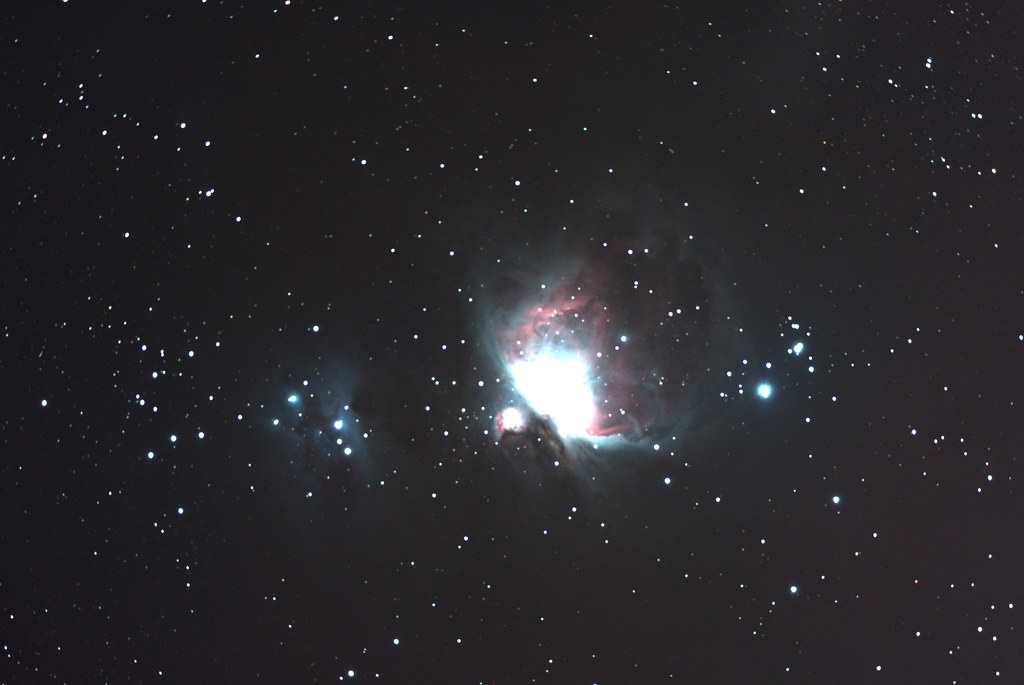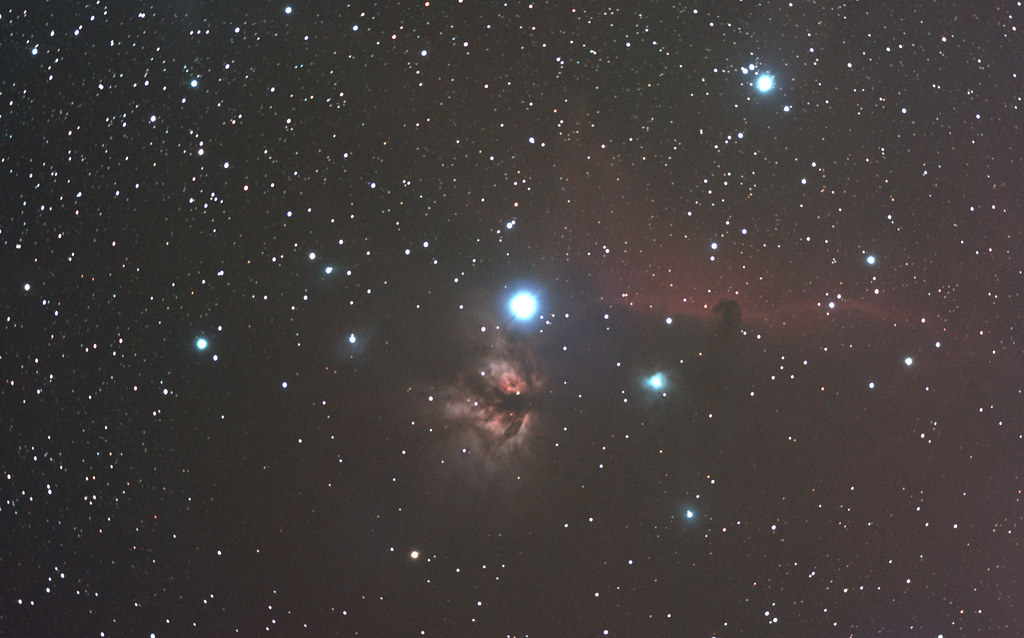 Since I first started taking an interest in the night sky during childhood my favorite constellation has always been Orion - The Hunter. This winter constellation stands out prominently among the rest, dominating the southern sky. Riding along the celestial equator, the three bright stars that make up Orion's belt are hard to miss. The Giza pyramid complex in Egypt is said to be a map of these three stars. To the ancient Egyptians, this constellation represented the god of death and the underworld. Greek mythology has a couple of different versions, one being that Orion was accidentally killed by Artemis after a dare by her brother Apollo. The other version had Apollo summoning a giant scorpion to kill Orion. The latter might explain why Orion and Scorpius occupy similar parts of the sky in opposite seasons.
Since I first started taking an interest in the night sky during childhood my favorite constellation has always been Orion - The Hunter. This winter constellation stands out prominently among the rest, dominating the southern sky. Riding along the celestial equator, the three bright stars that make up Orion's belt are hard to miss. The Giza pyramid complex in Egypt is said to be a map of these three stars. To the ancient Egyptians, this constellation represented the god of death and the underworld. Greek mythology has a couple of different versions, one being that Orion was accidentally killed by Artemis after a dare by her brother Apollo. The other version had Apollo summoning a giant scorpion to kill Orion. The latter might explain why Orion and Scorpius occupy similar parts of the sky in opposite seasons.It is easy to see why so many civilizations regarded this constellation with so much attention. You can't help but stare at it when stepping out on a cold winter night. The great yellow star Belelgeuse dominates Orion's shoudler, while the bright multiple star Rigel stands at one of Orion's feet. And of course you can't miss the three stars of Orion's belt - Alnitak, Alnilam, and Mintaka. Straight below the belt you will find Orion's sword, and a large nebula complex appropriately called the Orion Nebula. This was also classified by Charles Messier as M42 and is a large cloud of illuminated dust visible to the naked eye (assuming your sky is dark enough). There are actually two Messier objects here, M42 and M43. Nearby is what is referred to as the Running Man Nebula, because it really looks like a man running. This is classified as NGC 1977, but is also part of a complex of other nebulae NGC 1973 and NGC 1975. This is all part of an extremely large area called the Orion Molecular Cloud Complex. This area covers nearly the entire constellation, hundreds of light years across and 1,500 to 1,600 light years away from us. A very active star forming region, the complex also contains Barnard's Loop as well as the famous Horsehead Nebula, also known as Barnard 33. Near to the bright star Alnitak and the Flame Nebula, this region is high in H-alpha emissions which give it a reddish glow behind the dark dust. The Flame Nebula (NGC 2024) is also a pretty sight, getting it's bright illumination from Alnitak. The bright energy of Alnitak knocks electrons loose from the hydrogen gas there, and when these electrons and ionized hydrogen recombine, they give off a bright glow.
This area represents a challenging object for imagers due to the very bright star Alnitak next to the very dim details we want to capture. Also, the deep red H-alpha regions around the Horshead Nebula are difficult to capture with a stock camera due to the internal filtering (more about that later). But with time and persistence, decent results can be obtained. Below are my first attempts at two regions of the Orion Molecular Cloud Complex.


No comments:
Post a Comment